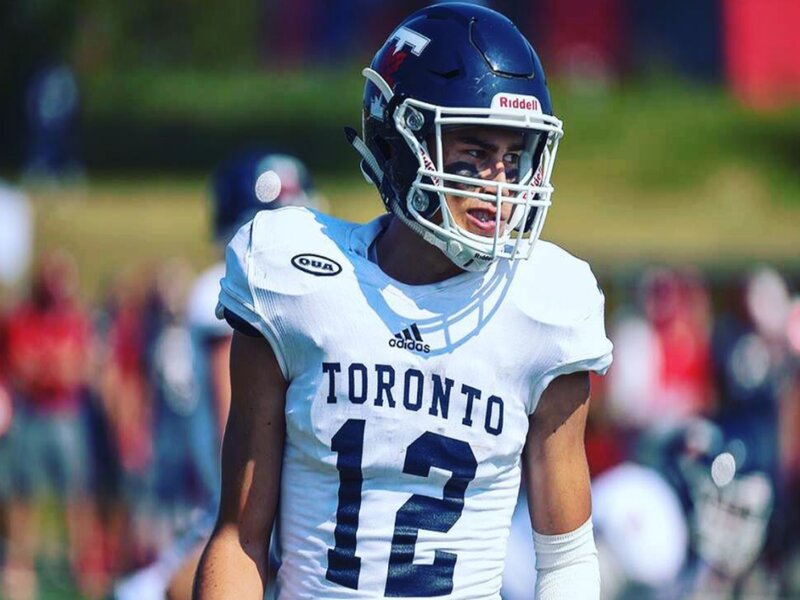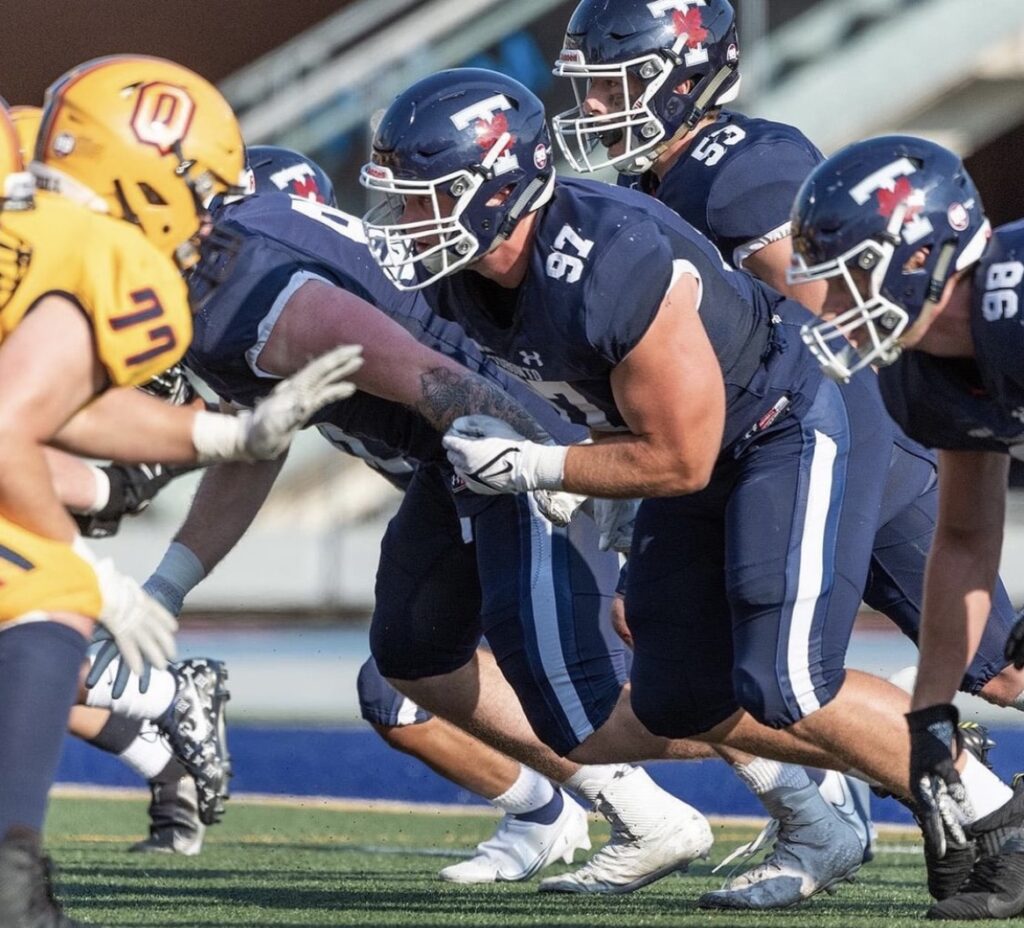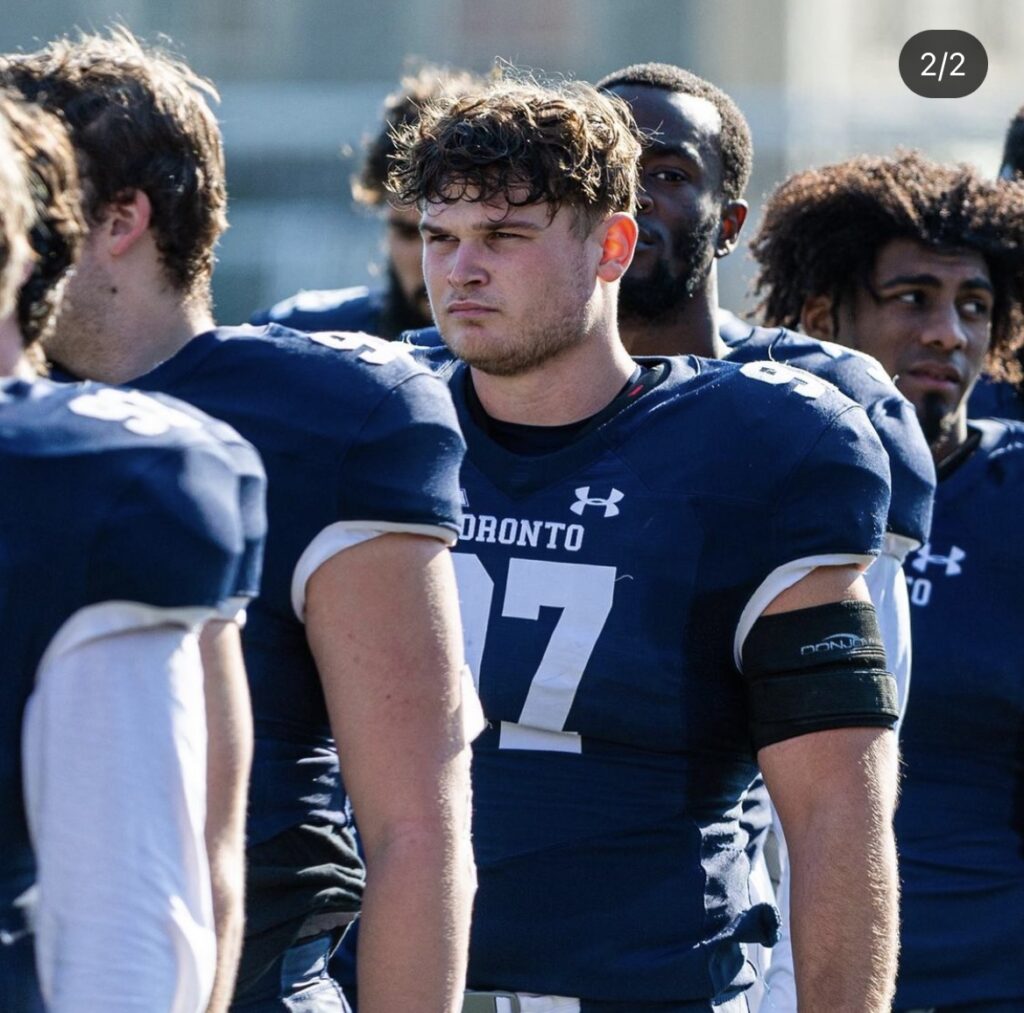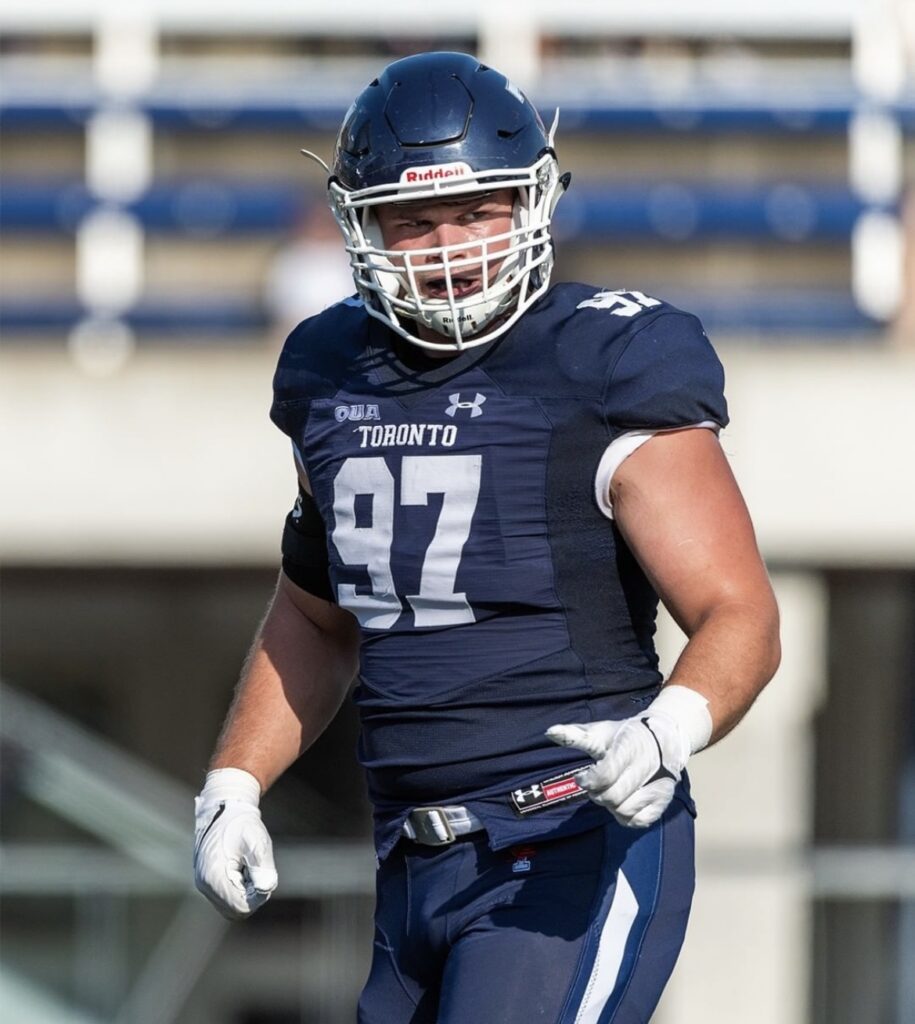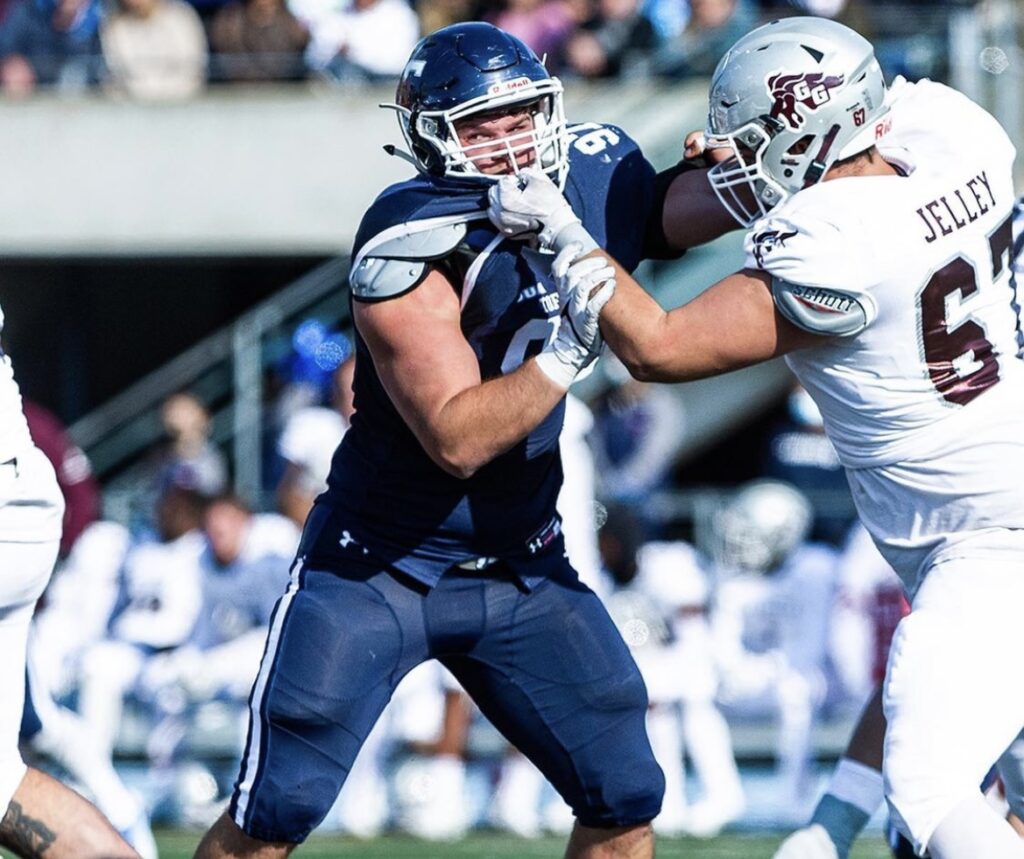By Madeline Bonavota
The roar of the Queen’s Gaels crowd echoes through the tunnel of Richardson Stadium. Fourth-year defensive lineman Blake Zarubiak and his teammates have just endured a tight season-ending loss to the Guelph Gryphons. It’s October 2019 and little does the six-foot-one, 265-pound Zarubiak know that this was his last game as a Gael.
Like many other football players heading into their final year of eligibility, Zarubiak was preparing tirelessly for the crucial upcoming 2020-2021 season when the province was abruptly hit by COVID-19. Fourth-year eligible players across Ontario were stunned as they were sidelined for an entire season, leading up to the 2021 Canadian Football League draft.
Knowing the sudden changes to his final season would hurt his chances of going pro, Zarubiak chose to push back his draft year and opt for an extra season of eligibility to further his development. That meant finding a new team and funding for another year of university, having already completed his kinesiology and health studies degree at Queen’s University.
Following weeks of contacting coaches, researching programs and continuing the daily functions of ordinary life, the former Golden Gael swapped gold for navy blue by signing with the University of Toronto Varsity Blues. Then, just when Zarubiak thought he had cleared one of the most significant hurdles of his football career, life got even more challenging.
Throughout the pandemic, leagues and football programs alike adapted to the constant changes imposed by the government and medical officials. Unlike professional athletes and student-athletes in the United States or surrounding provinces, Ontario football student-athletes were not granted “elite” status by the government. Exclusion from the elite list meant players couldn’t play and train, putting them at a significant disadvantage in pursuing professional careers.
In an attempt to slow the spread of COVID-19, Ontario created a list of elite sports and teams allowed to play and train during the pandemic. Players on professional teams and those participating in international tournaments such as the Olympic Games were declared elite and didn’t have to follow numerous COVID-19 restrictions.
Matthew Davies, the chief operating officer of Ontario University Athletics, says that throughout the pandemic the league’s primary concern was to provide players with the ability to train while adhering to COVID-19 guidelines. The league wanted to ensure its athletes would be prepared for their eventual return to play.
As Ontario university football players were banned from their training facilities for months, they were left to train at home, without the essential training space and gear to keep up with the harsh physical demands of pursuing a career in professional football.
Wide receiver Will Corby has been training on his own for months. He rises on a chilly winter morning in 2021 as he prepares for his player performance evaluation ahead of the 2021 CFL draft. The six-foot-three, 198-pound Corby clicks off his alarm and opens his blinds to see the dim 5 a.m. sky. He grabs his water bottle, Varsity Blues backpack and car keys as he dashes out the front door of his downtown Toronto apartment. He drives down the dark empty lanes of the Queen Elizabeth Way, en route to the open outskirts of Burlington, Ont., to complete his routine morning workout.
“The main struggle in the path to professional football out of university was the lack of accessible training facilities because of COVID-19,”
says Corby, newly signed to the Ottawa Redblacks of the CFL.
With limited options, desperate athletes like Corby will go anywhere to train. “On top of that, having to miss out on a season, you lose out on many opportunities to showcase your skill to professional scouts,” he says.
Ontario football players not only missed out on their seasons, but they also lost their opportunity to be scouted in individual showcases.
“We are not only competing with ourselves and players of the CFL, but we are competing with athletes in the National Collegiate Athletic Association who were able to train consistently in the United States,”
says Zarubiak.
With the 2022-23 draft class being one of the largest ever because hundreds of football players opted for an extra year of eligibility, Ontario prospects feel as if they have been put at an extreme disadvantage in climbing up the ranks.
Lack of training led to an alarming increase in injuries. Following weeks of second-year Varsity Blue Maelik Graciano finding himself glued to his bedroom chair doing schoolwork, watching lectures and attending meetings he noticed a new pain in his lower back. After meeting with Varsity Blues trainers, the six-foot, 272-pound defensive lineman was diagnosed with a back injury caused by all those hours of sitting. It sidelined him for two months, forcing him to miss all 2021 summer training camps.
As well, “many of my teammates throughout training camp and heading into the season experienced a high volume of hamstring injuries,” says Corby.
Football is a highly physical sport and athletes insist they need time in the weight room to get stronger and work on injury prevention.
“Toronto-based athletes were away from their facilities longer than anybody else,”
says Dr. Carla Edwards of the U Sports Sport Medicine & Research Science Committee.
Athletes outside Toronto had more group and individual training, often just a few hours away in Hamilton and Ottawa.
The pandemic amplified mental illness in different regions, she says. Levels of depression spiked at the beginning of the pandemic due to isolation and stress levels grew as athletes were kept away from their selected sport. Edwards says there is a direct correlation between high-stress levels and players’ development being undermined, as many players have regressed mentally and physically.
Zarubiak found himself in a lonesome cycle throughout the lockdowns. Like many student-athletes, he would wake up before daybreak, train at the nearest available gym, attend classes, train again, then go home to complete school tasks and sleep, only to do it again the following day. In-person socializing was impossible as he could not risk catching COVID-19 and missing training. Zarubiak says being able to train, challenge and learn with his teammates is what he misses most.
Corby too. “When you are trying to prepare for a season with 54 guys dressing a game, it is important to be working out together and gaining chemistry and not being able to do so creates another level of difficulty that was unexpected,” he says.
For Zarubiak, there was light at the end of the tunnel. After months of preparation, he participated in the invitation-only 2022 CFL Ontario Regional Combine in Waterloo in early March. It was worth the wait as Zarubiak finished ahead of the pack in key categories of the showcase. Now, he continues to train by working out daily, hoping his years of preparation mean he’ll hear his name called during the 2022-23 CFL draft on May 3.

